Our expert local tour guides will meet with you on your arrival at the Kotoka International Airport Accra, which is situated on the beautiful gold coast of Western Africa. Look out for the African Star Tours sign when you leave the main terminal building after passing through customs. Make yourself known to your guides who will be accompanying you for the duration of your time in Ghana and they will take care of you from here.
After boarding our vehicle, which will be your mode of transport for the duration of your tour, we transfer you to your accommodation which is situated in Accra. Once we have checked you in, our experienced guide will offer you Akwaaba (welcome) and brief you on all aspects of your trip. You can enjoy your evening meal at the hotel restaurant whilst acclimatising yourself to West Africa.
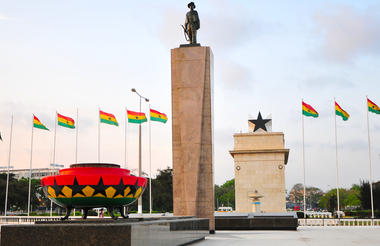
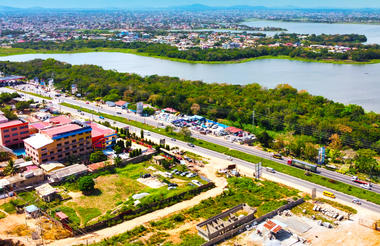
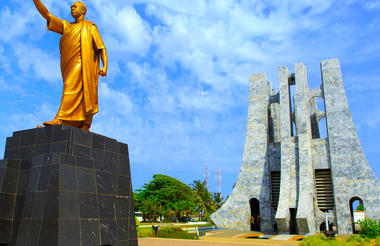
Economic districts, National Museum, James Town, Independence Square, Kwame Nkrumah Memorial Park and National Cultural Centre
On your first full day in Ghana, we begin with breakfast at the hotel before embarking on a tour of Accra. Passing through the city's economic and administrative districts, we visit the National Museum, showcasing ethnographic displays from Ghana and West Africa. The adjoining garden features sculptures reflecting West African traditions, and you’ll have the opportunity to purchase traditional fabrics and crafts.
Next, we explore Jamestown, a historic district with colonial-era architecture and vibrant local life. During our walking tour, we’ll see the 30-meter-high lighthouse built in 1871 and colorful fishing boats along the shore. We also visit Fort James, a British trading post from 1673, and the Brazilian stone houses built by freed African Brazilians after the abolition of slavery. This visit provides a glimpse into old Accra, highlighting the differences between British and Dutch influences.
Lunch is at Country Kitchen, offering a mix of West African and continental dishes. In the afternoon, we visit Black Star Square and Independence Square, home to the African Liberation Flame lit by Kwame Nkrumah in 1961. We then proceed to the Kwame Nkrumah Memorial Park, the final resting place of Ghana’s founder, featuring gardens, a museum with artifacts, and striking architecture made of Italian marble.
Finally, we stop at the National Cultural Center, Ghana’s largest arts and crafts market, where you can shop for traditional items from across West Africa. Afterward, we return to the hotel for dinner and an evening of relaxation.
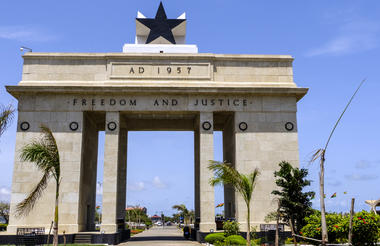
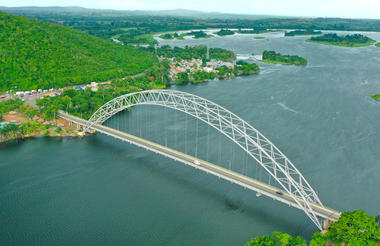
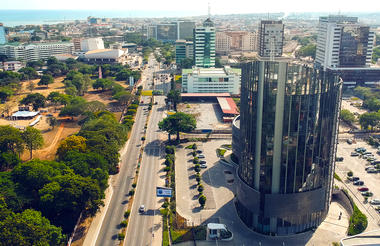
Fort Amsterdam and Cape Coast Castle
This morning, we enjoy a relaxed breakfast before heading west to Elmina and Cape Coast in Ghana’s Central Region. The name "Elmina," meaning "The Mine," was given by the Portuguese due to the abundance of gold in the area. Historically known as the Gold Coast, Ghana remains a leading global gold exporter, ranking eighth worldwide and second in Africa after South Africa.
On our journey along the coastal road, we stop at Fort Amsterdam in Abandze, the first fort built by the British between 1631 and 1638. Captured by the Dutch in 1665, it was named Fort Amsterdam. The fort, restored in 1951, is believed to have housed the Gold Coast’s first slave prison in its southeast bastion. After an informative tour, we continue to Elmina and Cape Coast.
In Cape Coast, we have lunch at a local ocean-view restaurant before visiting the Cape Coast Castle, a UNESCO World Heritage Site. This sobering monument offers a poignant glimpse into the transatlantic slave trade, with tours of the dungeons and the “Door of No Return.” The castle also features a museum detailing its history and that of Cape Coast, along with a shop selling literature on Ghana's forts, castles, and cultural heritage.
After this reflective experience, we check into our accommodation, enjoy dinner, and unwind for the evening.



Kakum National Park, Canopy Walkway, Stingless Bee Centre and Elmina Castle
After breakfast, we head to Kakum National Park for an early start. The highlight of the day is the famous rainforest canopy walkway, consisting of seven bridges suspended 40 meters above the rainforest floor. The walkway offers stunning views across the tropical Guinea rainforest, with platforms between the bridges to take in the scenery. It’s an unforgettable experience!
We then visit the park’s information center, which provides insight into the park’s flora and fauna, home to over 40 mammal species including forest elephants, leopards, and primates. A short distance away is the International Stingless Bee Project, where we learn about the vital role of bees in the ecosystem, taste their honey, and explore the bee walkway and butterfly garden.
For lunch, we stop at Han’s Cottage Botel, set over a lake with Nile crocodiles and surrounded by rainforest. It’s a peaceful spot to relax before heading to Elmina. In Elmina, we visit St. George’s Castle, the oldest colonial building in sub-Saharan Africa, dating back to 1482. The castle, now a UNESCO World Heritage site, has a museum dedicated to local history and its role in the transatlantic slave trade.



Transfer to Lomé and visit the Grand Marche and German Cathedral
After an early breakfast, we begin our journey to Lomé, Togo's capital. We stop for lunch in Accra before continuing on the 4-hour drive to Lomé. Upon arrival, we visit the bustling Marché, a vibrant three-story market that overflows into the surrounding streets. Despite its chaotic appearance, the market is surprisingly orderly and full of energy.
Next, we explore the Sacred Heart Cathedral, a stunning Gothic structure built in 1905, a lasting legacy of German influence. After checking into our accommodation, the rest of the day is free for leisure, allowing you to relax and reflect on our first day in Togo.



Cruise on Lake Togo to visit Togoville and transfer to Ouidah
After a leisurely breakfast, we check out of the hotel and head to Benin. Before leaving Togo, we visit Aneho, located 48 km east of Lomé, once known as Little Popo and an important town during the slave trade. We take a pirogue across Lake Togo to Togoville, historically the center of Voodoo. Here, we visit the Maison Royal, where the 1884 peace treaty was signed, and explore active shrines important to the locals. We also see a shrine commemorating the Virgin Mary's appearance on the lake in the 1970s.
After lunch at a nearby hotel, we cross the border into Benin, reaching Ouidah, the birthplace of Voodoo, in about two hours. Upon arrival, we check into our accommodation and enjoy the rest of the day at leisure.
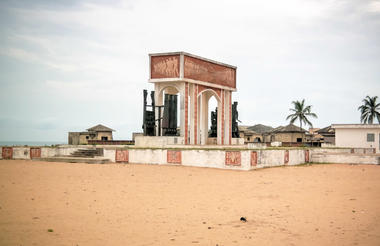


Portal of No Return, Sacred Pythons Temple, Sacred Forest and Voodoo Ceremony
After breakfast, we begin our tour of Ouidah, the Voodoo center of West Africa. From the 17th to 18th centuries, enslaved Africans were shipped from Ouidah's port, primarily to Brazil, Haiti, and the Caribbean, where Voodoo remains prominent. We visit the Ouidah Historical Museum and the Sacred Forest, home to figurines representing deities and founders. Our tour ends at the Sacred Python Temple, where pythons are revered and must not be harmed.
After lunch, we head to the Voodoo ceremony. Voodoo is actively practiced by over 75% of Benin's population and was brought to the Americas during the slave trade. The annual Voodoo festival, a public holiday, includes animal sacrifices and trance-like states, showcasing deep devotion. This unforgettable experience concludes with our return to the hotel and free leisure time.
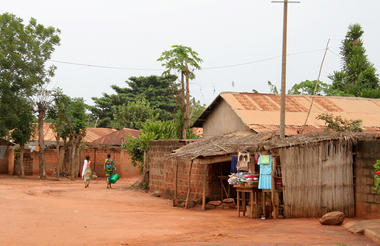


Private Voodoo Ceremony, Great Mosque and Dantokpa Market
After a leisurely breakfast, we experience the Voodoo Ceremony. Voodoo, or Vodoun, is a major religion in West Africa and is officially recognized in Benin. It is a complex belief system with numerous gods governing various aspects of life. Voodoo temples, headed by priests, are common in Benin and Togo, and rituals often involve sacrifices to communicate with these gods. The Egunguns, manifestations of the dead, and fetishes such as rocks and trees believed to house spirits, are important elements in the ceremonies. Witnessing a Voodoo ceremony offers a glimpse into this fascinating and mystical world.
Following the ceremony, we visit Porto Novo's Great Mosque, a former church with an intriguing history. Afterward, we return to Cotonou for lunch at a local restaurant, followed by a visit to the bustling Dantokpa Market, one of West Africa’s largest outdoor markets. The wax print section is perfect for fabric souvenirs. We end the day with a relaxing evening meal at our hotel.



Ganvie the Venice of Western Africa and Agongointo
After a relaxing breakfast, we check out of our hotel and head to Ganvie, often called the "Venice of West Africa." This picturesque community of over 30,000 people lives in stilted houses on Lake Nokoue, making it the largest water-based settlement in West Africa. Most of the locals are fishermen, and we'll have a leisurely day, possibly trying our hand at fishing with a local guide. If we're fortunate, we'll enjoy fresh, grilled fish for lunch.
Afterward, we drive approximately two hours to Abomey, aiming to arrive by mid-afternoon. Our first stop will be the recently discovered underground dwellings of Agongointo-Zoungoudo, located just outside Abomey. Dating back to the 16th century during the reign of King Dakodonou, these underground structures were used to protect locals from invaders and provide an element of surprise for warriors during battles.



Travel to Cotonou and Departure
On our final morning in West Africa, we check out after a relaxed breakfast and head back to Cotonou. Upon arrival, there may be some time for last-minute sightseeing and shopping. For our early evening meal, we’ll enjoy a selection of local and international dishes at a locally owned restaurant, offering the perfect opportunity to reflect on our wonderful journey together. After dinner, our team will transfer you to the airport for your departure.









